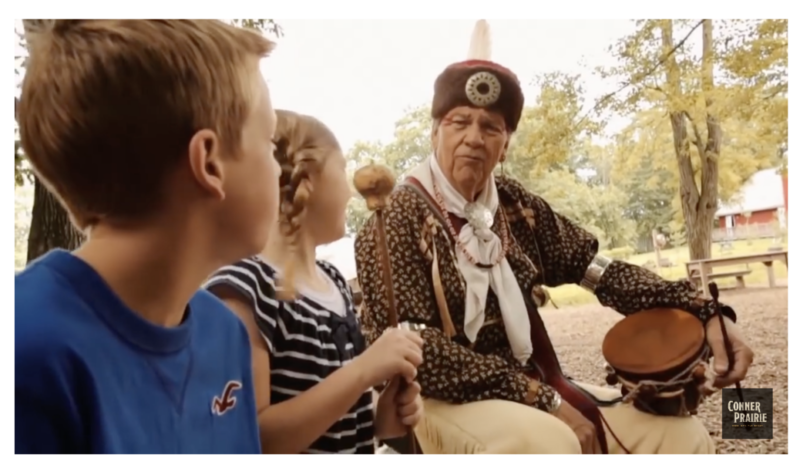Native American Heritage Month, Indiana’s history, and a season of gratitude

Over 30 years ago, President H.W. Bush and Congress designated November as National American Heritage Month, encouraging all Americans to learn about the contributions, past and current, of North America’s Indigenous peoples. As we celebrate the work and cultures of Native Americans, it is also a good time to help our children learn about our state’s history.
Our state’s name signals Indiana’s connection to Native Americans, meaning “Land of the Indians” and permanently linking our state to its territorial history. The American Library Association (ALA) provides a history of the Indigenous Tribes of Indiana, outlining our state’s history and providing resources that can help everyone dig deeper into individual tribes. Long before Indianapolis earned the nickname of “Crossroads of America,” based on intersecting highways, Indiana functioned as a crossroads for many Native American tribes.
Researcher Tara Kenjockety, part of the Seneca Nation and an enrolled member of the Ho-Chunk Nation of Wisconsin, noted in her research for the ALA that Indiana was considered home to several different indigenous tribes, including the Miami, Wea, Piankashaw, Shawnee, Eel River, Delaware, and Potowatomi. Many additional indigenous tribes had a presence in Indiana at various points in history, including the Kickapoo, Odawa, Chippewa, Wyandot, Kaskaskia, Mahican, Nanticoke, Huron, and Mohegan. The Indiana Department of Natural Resources also provides an overview of the state’s Native American history. Today, Native American Hoosiers are increasing in number, with about 26,086 (0.4%) individuals identifying as Native American in 2020, compared to 18,462 (0.3%) in 2010.
This month, the Indiana Native American Indian Affairs Commission (INAIAC) and Gov. Eric Holcomb are highlighting the history, heritage, culture, and current affairs of Native American Indian residents through events across the state. Several local events are complemented by Conner Prairie’s virtual lectures and the Eiteljorg Museum’s Thanksgiving Weekend at the Eiteljorg.
Teaching children
In addition to local, state, and national events and resources, there are ways that we can enhance efforts to educate our children on our Native American heritage.
- Educate yourself on customs, dress, foods, and languages of the wide diversity of Indigenous tribes.
- Avoid stereotypes, instead talk about tribe-specific customs and practices.
- Invite Native Americans to share their experiences, or listen to student webinars such as this one recorded in partnership with the Smithsonian’s National Museum of American Indian.
- Avoid words and phrases that may be offensive, such as “my tribe,” “spirit animal,” and “Indian giver.”
- Don’t avoid questions about the history of colonists in our country, particularly the painful realities of how the land was acquired.
- Discuss and celebrate Native Americans’ understanding of natural ecosystems and dedication to environmental preservation.
Perhaps one of the most impactful actions we can take is to focus on Thanksgiving as a holiday of gratitude. Move away from recreating misleading, glossy, and hurtful stories of the “first” Thanksgivings that many of us learned in childhood. Instead, focus on building community connections, eating local foods, and showing gratitude for an abundant feast.
By updating our Thanksgiving celebrations and helping young people understand the history and ongoing impact of Native American people in our state, we can turn learning into action. Acknowledging that Indigenous people are part of communities across Indiana helps go beyond history to build support for rich additions that Native cultures add to our state. And that’s something we can all be grateful for.
Find resources to explore topics both present-day and historical of the Indigenous people of Indiana at iyi.org/native-american-heritage-month/.








